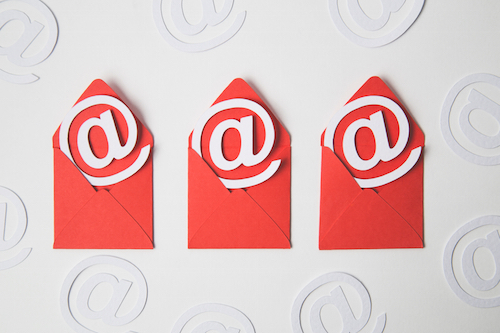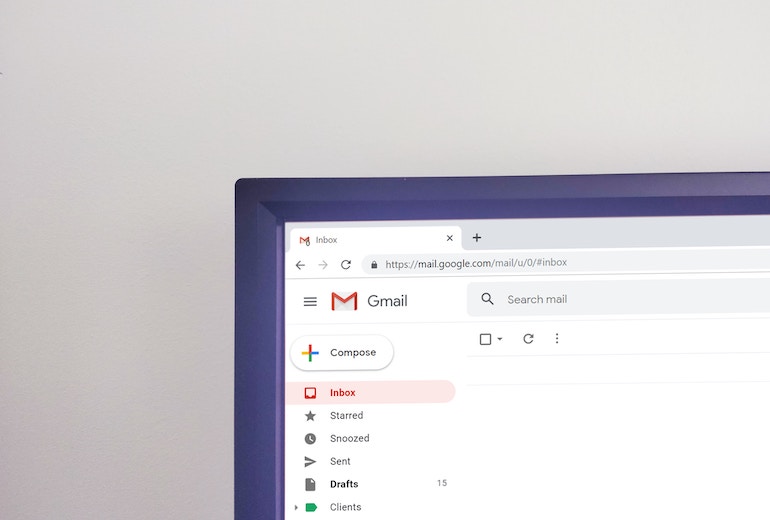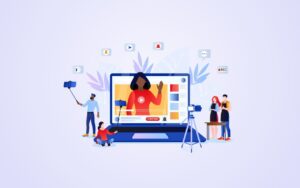Have you been giving enough attention to your email subject lines? Like many marketers, you probably spend ample time on email content, the body text, the call to action, and deciding on how to use images. But it’s all for nothing if the email can’t be read because you didn’t draw them in with a great subject line. According to HubSpot, 35% of email recipients open email based on the subject line alone, which means you have mere seconds to convince your audience to either read or delete.
So, subject lines are undoubtedly important. However, it’s harder to know how to improve them. Is it more science or art? Below we share some best practices to help guide your subject line drafts.
First Do You Have an Email Marketing Strategy?
An email marketing strategy means having a plan of action, from defining your campaign goals, segmenting your audience lists, deciding on imagery and format, and thinking through your click-through-journey and calls-to-action (CTAs). Without these important elements, a one-off email will likely fall flat.
To properly measure success, you also need things to track. One key benchmark is your email open rate – hence our focus of this post. Email open rate is a percentage of the total number of people who received an email compared to the number of people that actually opened it. Across many different industries, the email open rate averages around 20 percent. For B2B marketers the open rate is lower, with an average of 15.1%. Another benchmark that is used is the click to open rate (CTOR), which is the percentage of people who clicked after they opened the email.
A successful email marketing plan must include:
A goal: What does success look like for you? For some, it may be having a consistent 10% open rate or improving your current metrics. But what you aim to achieve is ultimately what drives what you say, and how you say it. Our advice: Be realistic. Do not set a goal to sell millions of lab equipment from your very first email. (And if you do succeed, details please!)
A call to action (CTA): Having a good CTA is everything. It’s the next action you want your audience to take after opening and should lead seamlessly into the landing page or next desired step.
Personalization: Gone are the days of “Dear Sir/Madam.” Your readers want the courtesy of knowing that you put a little effort toward getting to know them. But it goes beyond just using their first name in the subject line (see “Email Subject Lines to Avoid” section below). Just using a first name without any other context can come across as manipulative or fake. As a marketer, you need to understand your audiences pain points, job, hobbies, and any other defining characteristics.
List segmentation: Your Salesforce or customer database is as diverse as your products and services. Do your due diligence by properly segmenting your email lists as much as possible. The more tailored your email list, the better the result, and the more you can then customize your subject lines to the audience you know is reading. Sending the same mass email to a large list of diverse targets is a sure way to get poor open rates – and results.
A/B Testing Framework: The details of this will look different depending on your email marketing platform, but the basic idea is that two emails with different subject lines are split and sent to different subsets of your list. Everything else needs to stay the same in order to accurate measure results between the two. Come up with a hypothesis and assumption you want to test, such as “Emojis don’t appeal to our audience.” One email will contain an emoji, and one will not, and you’ll compare the open rates. We suggest running a few of these tests over a period of time to determine the true results. Some automation platforms, like Eloqua, will automatically choose the winner depending on the goals you set for the test in the back end.
These basics will help to ensure that your email is well-received, and ultimately lead to better open rates. Now, let’s get into the nitty-gritty.

Email Subject Lines to Avoid
So, what are the components of compelling email subject lines? It might be helpful to start by understanding what not to include in your email subject lines. In addition to being potentially boring or misleading, your email subject lines could contain spam words that are filtering your email before it even gets to the reader.
Responses by industry vary, but here are some general guidelines for subject line words to avoid:
Words that look like blatant marketing such as save sale, deal, discount, low price, free, or even dollar signs ($$$). These words can trigger people’s defenses, or worse, their spam filter, and they could dismiss your email as just another sales pitch. Sometimes you get lucky and your email will get opened by the exact person who is looking for a low-price item like yours that day, but do you want to put all your eggs in that basket?
Falsely familiar: Words that try to appear as if you already know someone on a personal level, such as “re:”, touch base, call back, just following up, or anything that looks like you are trying to pass yourself off as a friend or acquaintance of the reader. No one likes to be duped. They won’t be fooled by your attempt at friendliness, and worse, you won’t be given a second chance.
Their first name. Now, to be fair, there are different perspectives on this: while emails that include a first name get more opens and clicks, some say it’s uncertain if this can actually lead to more conversions. Using someone’s first name might be received as an invasive assumption and, as noted above, doing so without any additional personalization can further alienate a reader. You could run the risk of annoying readers. “Hi [Name],” or “Did you forget something, [Name]?” or even “[Name], your RSVP” are examples. For the latter, reminding someone to RSVP to an event they never heard of is a sure way to get banned from their inbox. Even worse, your data may not be correct. Are you sure names are spelled correctly, or that you have them for everyone in your database? Actually sending Hi “First_Name” is never a good impression.
A deceptive subject that does not relate to the content. For example, the subject line “Most annoying email phrases” would be good if that’s what your email was about. But if you use it as a tactic to get someone to open your email and there is nothing about the topic in the body text, your reader will be unforgiving.
False urgency. Have you ever received an email with the subject line “Call me ASAP’ or “Warning…” Maybe you opened it even if you didn’t recognize the sender, because our natural response is one of alarm. But if your reader opens the email only to find it was a sales tactic, you risk ruining your credibility. No one likes to be deceived, and if you put them in a brief moment of panic, you’ve crossed the line. The only exception is if your email subject is actually urgent. In this case, readers might appreciate your reaching out before they missed an important deadline or fee.
ALL CAPS. This goes along with false urgency above. Usually, emails with all caps have subject lines like, “URGENT” or “RESPONSE REQUIRED IMMEDIATELY.” Not surprisingly, these subject lines, which is analogous to yelling via email, have fewer replies and can often be marked as spam.
A Note About Spam Filters
There are a number of red flags that can cause your emails to totally skip the inbox and go straight to the spam folder. Some common reasons include your recipient not opting in to receive your emails, your IP address has a history of being used for spam, attempts to mislead spam filters, and more. To avoid these issues, follow best practices: Include a physical address of your company (a legal requirement) and well as an unsubscribe link, and don’t try to trick your subscribers with misleading subject lines. While email clients attempt to filter spam automatically, the recipient can manually report you themselves as well.
Compelling Email Subject Lines
Now that you know what not to do, what should you do to write compelling email subject lines?
Reiterate what you know about them. For example, if you are emailing about an event that they attended before, put that in the subject line. For example, “Will you be attending [XYZ] event again this year?” would indicate an established relationship and can get someone’s attention in a quick scan.
Include information to help them be successful. This tells the reader that you care about more than just their sale, and that you took the time to create some content that could help them do their job. Content marketing is a win-win for email marketing. Subject lines that include “Best of” or “Tips” or even “How To” piques the interest of overtaxed readers.
Humor. This is tough one to pull off, and most importantly requires that you understand your audience. There’s nothing worse than a joke that falls flat. If you’re not good at humor, be real. Try to strike a chord with any aspect of our overloaded daily lives.
Keep it short. A long, complex subject line will muddle its impact, – and get cut off in many email clients anyways. Constant Contact recommends keeping your subject line to 40 characters or less, or about seven words long. This is especially helpful because of the truncation risk on mobile devices. Plus, making each word matter forces you to write as clearly and directly as possible.
Tease your topic. If your content is well thought out in terms of your audience’s needs, wants, and pain points, then teasing out a choice piece of information might be compelling. “The votes on [XYZ product] are in…” or “New [service] approach shown to lower costs 25%” are examples of this tactic.
Other Ways to Improve Email Open Rates
To further enhance the reach of your email marketing campaigns, as with any marketing campaign, it’s important to study the data coming in from your own customers who opened your emails. What can you learn from them? This information, along with the “dos and don’ts” outlined above, can help transform your email campaigns from something that your subscribers instantly delete to a lead generating engine.
Featured Photo by Krsto Jevtic on Unsplash


















